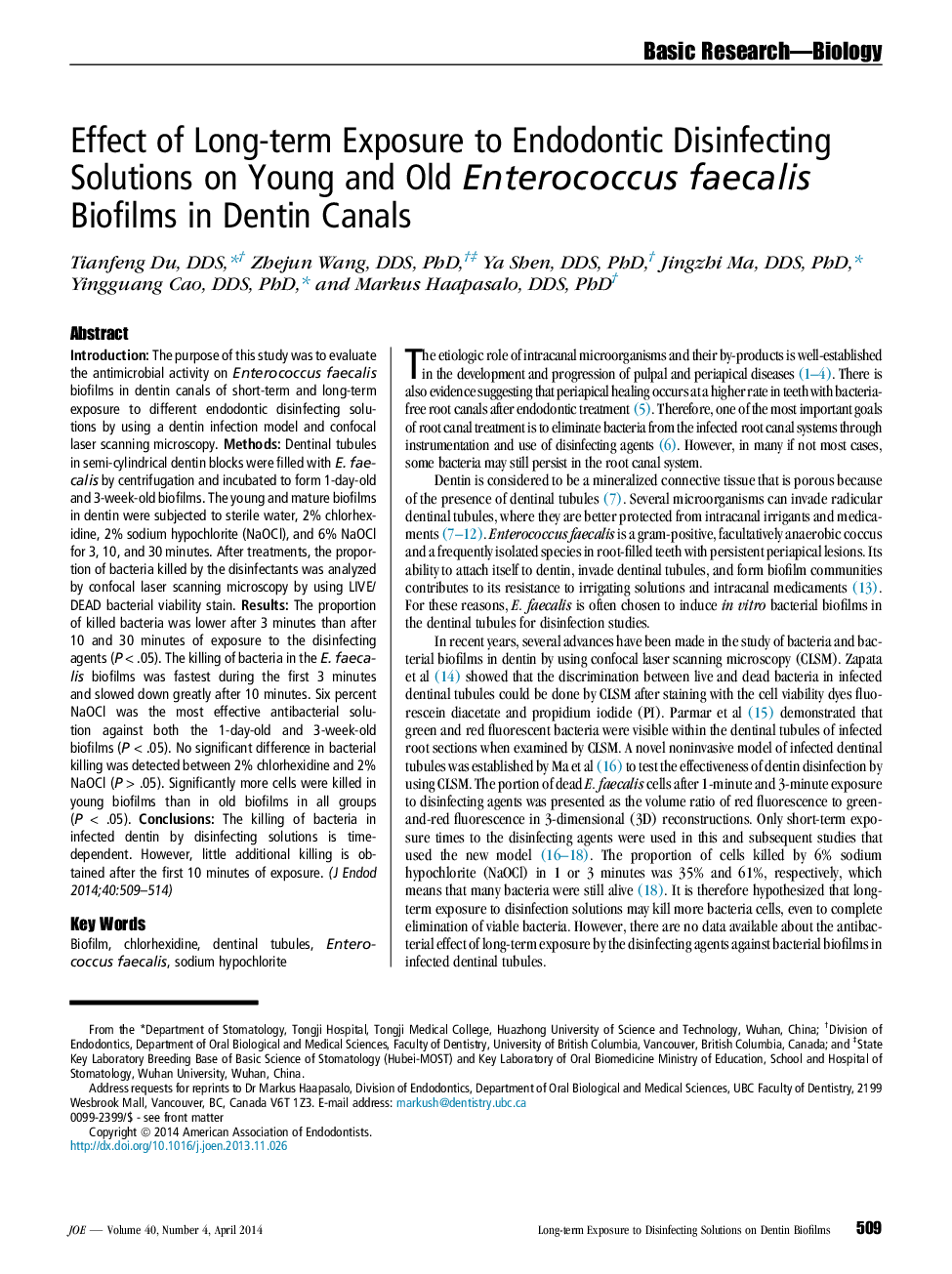| Article ID | Journal | Published Year | Pages | File Type |
|---|---|---|---|---|
| 3148474 | Journal of Endodontics | 2014 | 6 Pages |
IntroductionThe purpose of this study was to evaluate the antimicrobial activity on Enterococcus faecalis biofilms in dentin canals of short-term and long-term exposure to different endodontic disinfecting solutions by using a dentin infection model and confocal laser scanning microscopy.MethodsDentinal tubules in semi-cylindrical dentin blocks were filled with E. faecalis by centrifugation and incubated to form 1-day-old and 3-week-old biofilms. The young and mature biofilms in dentin were subjected to sterile water, 2% chlorhexidine, 2% sodium hypochlorite (NaOCl), and 6% NaOCl for 3, 10, and 30 minutes. After treatments, the proportion of bacteria killed by the disinfectants was analyzed by confocal laser scanning microscopy by using LIVE/DEAD bacterial viability stain.ResultsThe proportion of killed bacteria was lower after 3 minutes than after 10 and 30 minutes of exposure to the disinfecting agents (P < .05). The killing of bacteria in the E. faecalis biofilms was fastest during the first 3 minutes and slowed down greatly after 10 minutes. Six percent NaOCl was the most effective antibacterial solution against both the 1-day-old and 3-week-old biofilms (P < .05). No significant difference in bacterial killing was detected between 2% chlorhexidine and 2% NaOCl (P > .05). Significantly more cells were killed in young biofilms than in old biofilms in all groups (P < .05).ConclusionsThe killing of bacteria in infected dentin by disinfecting solutions is time-dependent. However, little additional killing is obtained after the first 10 minutes of exposure.
